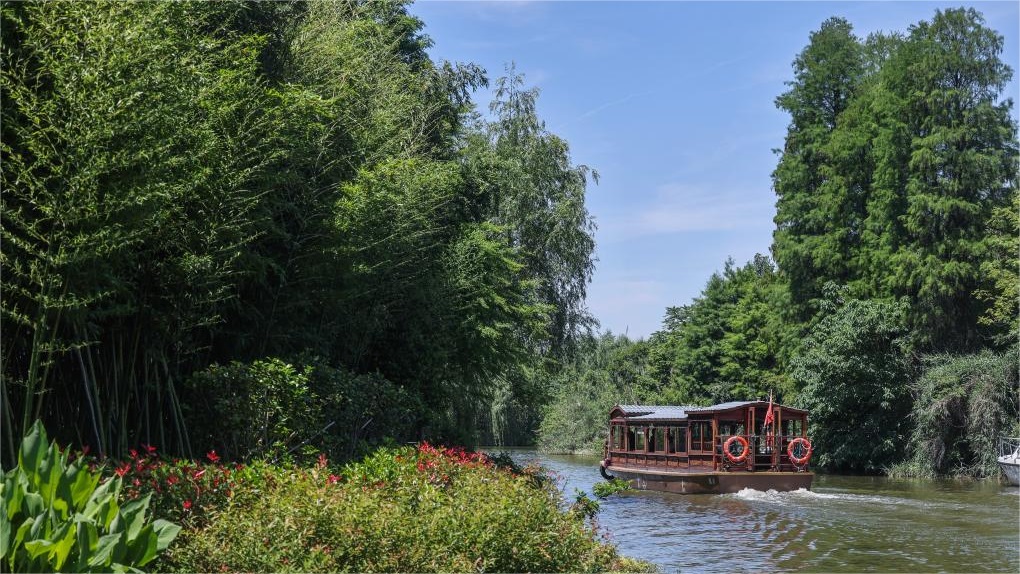Yin Ruins shed new light on 3000-year-old civilization in C China's Henan
Editor's Note: Chinese civilization has moved forward with enduring vitality throughout history. Discoveries at the Liangzhu archaeological site that reveal the origins of Chinese civilization, along with the ancient Chinese characters on oracle bones from the Yin Ruins and the cultural treasures of the Sanxingdui Ruins, all testify to China's splendid civilization.
Chinese civilization, spanning ancient and modern times, radiates brilliance. It is deeply rooted in the nation's identity and the wisdom of its people. To truly understand China, one must grasp the essence of this civilization.
People's Daily Online presents the "Tracing the origins of Chinese civilization" series of promotional videos. These videos explore the treasured aspects of Chinese culture, decipher the ancient codes of civilization that have been passed down over thousands of years, and share how China's ancient civilization continues to thrive in modern times.
"I have long been yearning to visit here. This time I come here to gain a deeper understanding of the Chinese civilization so that we can make the past serve the present, and draw inspiration for better building modern Chinese civilization," said Chinese President Xi Jinping during his visit to the Yin Ruins in Anyang city, central China's Henan Province, in October 2022.
The Yin Ruins, dating back over 3,000 years, were once the capital of the late Shang (Yin) Dynasty (1600 B.C.-1046 B.C.), confirmed through documented evidence and archaeological excavations. The Yin Ruins and the oracle bone inscriptions unearthed there provide conclusive proof of the dynasty, extending recorded Chinese history by nearly 1,000 years earlier than previously believed.
A new building of Yinxu Museum in Anyang city officially opened to the public on Feb. 26, 2024. The museum showcases nearly 4,000 items or sets of cultural relics, including bronzeware, pottery, oracle bones, and jade objects. Over three-fourths of these relics are being shown to the public for the first time.
Chinese civilization boasts a rich and uninterrupted history, and archaeology has played a crucial role in preserving and passing down its cultural heritage. It is essential for understanding the depth and significance of Chinese culture.
In the outskirts of Anyang, Jiao Peng, a senior technician at the Anyang Institute of Cultural Relics and Archaeology, and his colleagues were conducting excavations, battling against wind and sand.
Archaeological work is physically demanding, often taking place in harsh and challenging environments.
Jiao developed a deep passion for archeology as a child, thanks to his father's influence. Despite moments of exhaustion, his unwavering love for archaeology has always prevailed.
As a grassroots archaeologist, Jiao takes on various responsibilities. In the initial stages, he draws, scrapes, takes photographs, and cleans skeletons. Later, he restores pottery and writes reports.
"When the artifacts I excavated are displayed in the museum and receive praise from viewers, I feel a tremendous sense of accomplishment. It is the ultimate reward for me," Jiao expressed.
Many archaeologists, like Jiao, dedicate their efforts to excavating ancient sites and unearthing buried cultural relics, bringing them to museums and revealing history to the world.
"Ancient people are able to communicate their thoughts to modern people through these picture-like symbols. I find this truly amazing," said Li Xiaoyang, head of the Cultural Relics Bureau of Anyang.
The character formation methods in oracle bone inscriptions reflect our ancestors' views on the relationship between humanity and nature, their understanding of nature, and their perspectives on human relationships. The structure of Chinese characters has remained unchanged. This continuation is the true Chinese gene, Li explained.
To date, more than 160,000 oracle bone inscriptions have been excavated from the Yin Ruins, revealing around 4,500 characters. About 1,500 characters have been deciphered, while many still require further verification.
The pressing task is to digitize the inscriptions and sort them through computer calculations, according to Li.
"When General Secretary Xi visited the old exhibition hall of Yinxu Museum, he showed great interest in almost every artifact from the Yin Ruins. I was very excited. His profound knowledge of history quickly facilitated a state of communication between us," Li recalled of Xi's visit in 2022.
"Everyone present felt inspired. We believe that through archaeological work and the exhibition of cultural relics, we can allow Chinese people and even our international friends to better understand Chinese culture and gain deeper insights into the endearing, lovable, recognizable, and tangible aspects of our culture. This can also contribute to cultural communication and exchanges between China and other countries," stated Li.
Oracle bones have a fragile texture and gradually deteriorate over time, making digital preservation urgent and necessary.
A digital platform developed by a research team at Anyang Normal University aids in deciphering the inscriptions, bringing new opportunities for their inheritance and protection.
In the Oracle Bone Inscription Information Processing Laboratory at Anyang Normal University, a graduate student named Yin Yiran scanned and inputted rubbings of oracle bone inscriptions.
After completing her undergraduate studies, Yin decided to pursue a graduate program in oracle bone inscriptions. She cited her curiosity as the primary motivation when asked about her choice.
To digitize the inscriptions, Anyang Normal University has established a big data platform that is freely and publicly accessible. It is the most comprehensive, standardized, and authoritative oracle bone inscription data platform in the world.
In addition, the university has launched a dedicated app, allowing users to learn and practice oracle bone inscriptions anytime, anywhere.
"The work we're doing now is to revive the understanding of oracle bone inscriptions, and help everyone learn about and recognize them," Yin said, expressing optimism about the future of this field.
"Through the integration of computer technology, our goal is to enhance the awareness of oracle bone inscriptions. As interest grows, we anticipate a rise in the number of researchers dedicated to this field, ensuring its ongoing development," Yin explained.
Photos
Related Stories
- Trailer: Ancient city of Anyang spreads its wings for high-quality development
- China's major grain-producing province speeds up innovation drive
- Centuries-old Bodhi tree in full blossom in Central China's Henan
- New elevator tower installed in old apartment building
- Embark on a mesmerizing night tour of Longmen Grottoes, C China's Henan
Copyright © 2024 People's Daily Online. All Rights Reserved.









